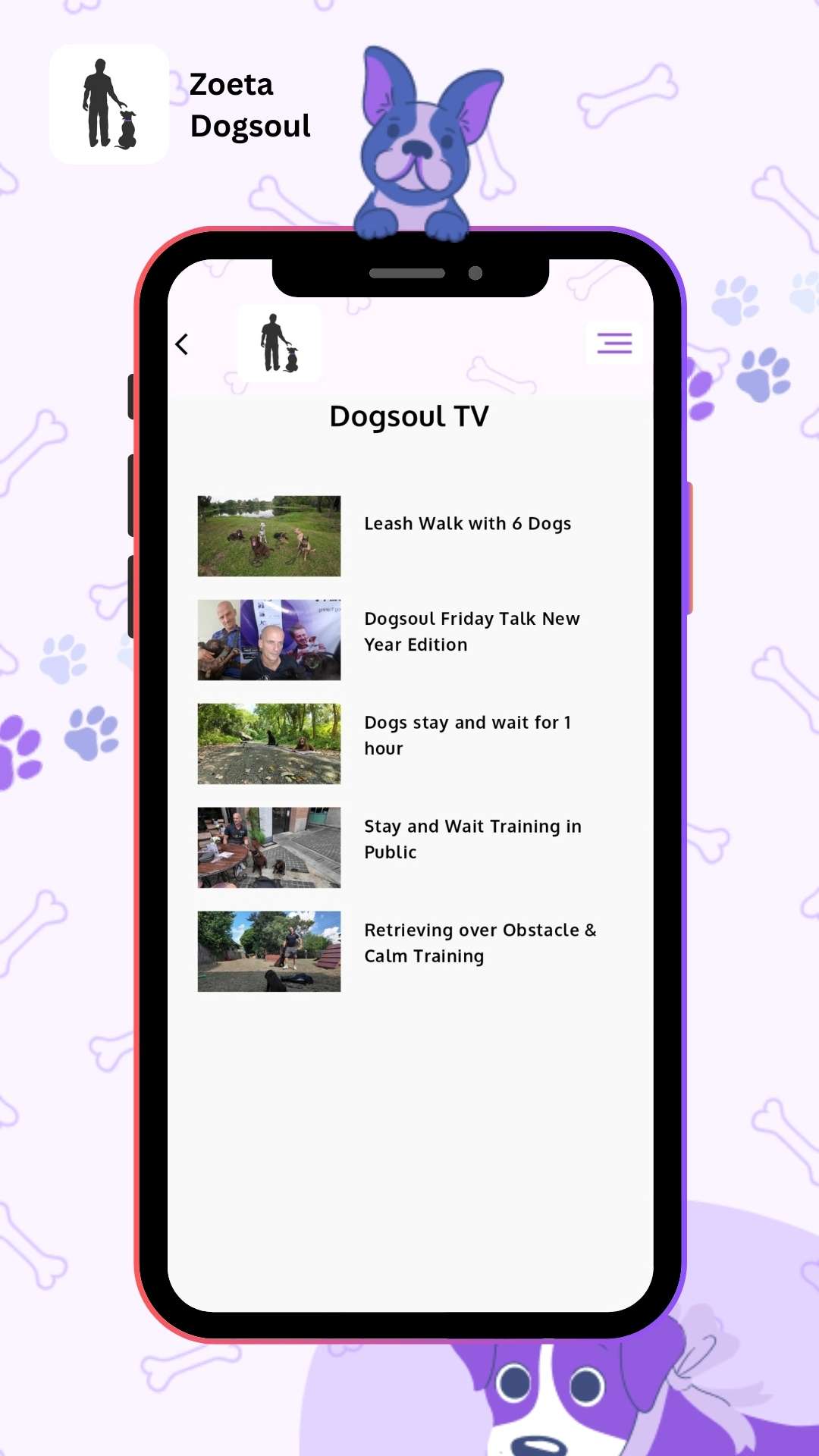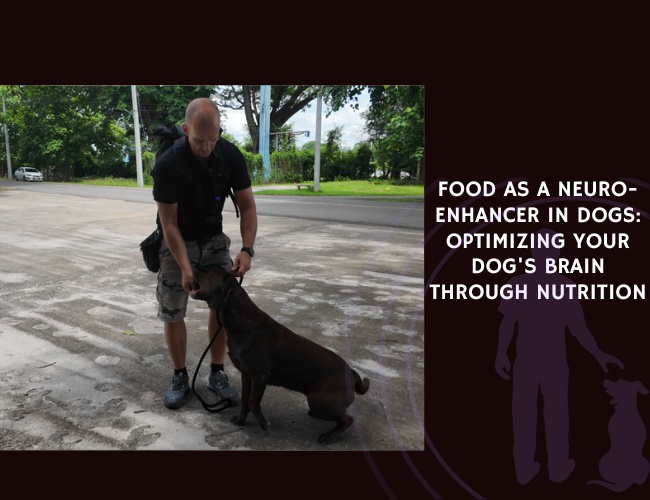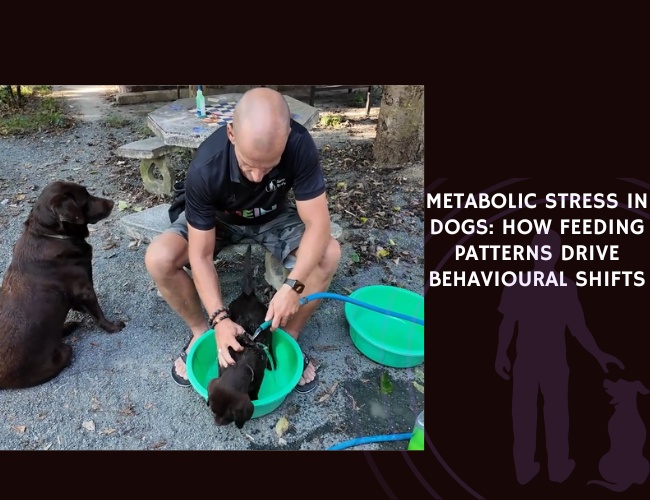Introduction: When Silicon Valley Meets Your Living Room
“The Canine Singularity,” a technological revolution that’s fundamentally transforming how we understand, train, and care for our four-legged companions.The convergence of artificial intelligence, wearable sensors, and predictive analytics is creating an unprecedented opportunity to enhance canine welfare. Just as smartphones revolutionized human communication, these emerging technologies promise to decode the subtle language of tail wags, optimize nutrition down to the individual kibble, and predict health issues before your dog shows a single symptom. But with this digital transformation comes essential questions about the human-dog bond, data privacy, and whether we’re enhancing or replacing our intuitive connection with our furry friends.
Let’s explore this fascinating intersection where cutting-edge technology meets wagging tails, and discover how the digital age is reshaping everything we thought we knew about caring for our canine companions.
Character & Behavior: The AI Revolution in Understanding Your Dog
Decoding the Digital Dog
You might notice your dog’s subtle behavioral changes—a slightly slower morning stretch, a hesitation before jumping on the couch, or an unusual interest in that corner of the yard. Now imagine an AI system that notices these patterns weeks before they become obvious to you, analyzing thousands of micro-behaviors to understand your dog’s emotional and physical state with unprecedented accuracy.
Meta-reinforcement learning (Meta-RL) approaches, originally developed for autonomous vehicles and adaptive streaming services, are now being adapted for canine behavioral analysis. These sophisticated algorithms learn not just from your individual dog, but from millions of data points across thousands of dogs, creating what researchers call a “meta-policy” for canine behavior. This means the AI understands that your anxious Chihuahua responds differently to stress than your neighbor’s confident German Shepherd, and it adapts its recommendations accordingly.
The behavioral fingerprint of each dog becomes increasingly clear through continuous monitoring. Smart collars equipped with accelerometers, gyroscopes, and biometric sensors create a comprehensive picture of your dog’s daily life. Does your usually active Labrador spend 20% more time lying down this week? Has your senior Beagle’s gait pattern shifted subtly to favor the right side? These changes, invisible to the human eye, become crystal clear to AI systems trained on vast datasets of canine movement patterns.
But here’s where it gets truly fascinating: these systems don’t just observe—they predict. By analyzing patterns across breeds, ages, and individual histories, AI can forecast behavioral issues before they fully manifest. That slight increase in nighttime restlessness combined with changes in eating speed might signal the early stages of cognitive dysfunction months before traditional symptoms appear. 🧠
Training in the Age of Algorithms
Traditional dog training relies on human interpretation of canine body language and standardized approaches that may or may not suit your individual dog. AI-guided training apps are changing this paradigm entirely, offering personalized training protocols that adapt in real-time to your dog’s responses, learning style, and even daily mood fluctuations.
Breed-specific learning optimization represents one of the most exciting developments in this space. The herding instincts of a Border Collie, the scent-driven focus of a Bloodhound, and the people-pleasing nature of a Golden Retriever all require fundamentally different training approaches. AI systems can now identify these breed-specific tendencies and adjust training methods accordingly. Your Shiba Inu’s independent streak isn’t a training failure—it’s a characteristic the AI anticipates and works with, not against.
Real-time biofeedback through wearable devices adds another dimension to training effectiveness. When your dog’s heart rate variability indicates stress during a training exercise, the system immediately alerts you to adjust your approach. This isn’t about replacing the trainer’s intuition; it’s about augmenting it with data that would otherwise remain invisible. Imagine knowing exactly when your dog has reached optimal focus for learning a new command, or when fatigue is setting in and it’s time for a break.
The integration of these technologies creates what researchers call a “closed-loop training system.” Your commands, your dog’s responses, physiological indicators, and environmental factors all feed into an AI that continuously refines its understanding of what works best for your specific dog in specific situations. Did your dog respond better to training in the morning versus evening? Does the presence of other dogs enhance or inhibit learning? The AI knows, and it adjusts accordingly.
Vocalization & Communication: Your Dog Finally Has a Voice
The Symphony of Stress Signals
Understanding what your dog is trying to tell you has always been part art, part science. Now, AI is shifting that balance dramatically toward science, creating a new field researchers call “computational canine communication.” Through the analysis of vocalizations, body language, and physiological markers, we’re approaching a future where your dog’s needs are understood with remarkable precision.
Heart rate variability (HRV) has emerged as a particularly powerful indicator of canine emotional states. Unlike simple heart rate, which merely tells us about arousal, HRV reveals the intricate dance between the sympathetic and parasympathetic nervous systems. Research originally conducted on human athletes and military personnel has shown that decreased HRV correlates strongly with stress and reduced performance capacity. In dogs, this same metric can indicate everything from separation anxiety to the early stages of illness.
Cortisol monitoring through non-invasive methods represents another breakthrough. While we can’t yet measure cortisol in real-time through wearables, proxy measurements like skin conductance and temperature fluctuations provide reliable indicators of stress hormone levels. Your dog’s smart collar might detect elevated stress patterns during thunderstorms, allowing the app to suggest calming protocols specific to your dog’s stress profile. Some dogs respond best to pressure wraps, others to specific sound frequencies, and still others to particular scent-based interventions—the AI learns what works for yours.
The integration of multiple communication channels creates a more complete picture than any single metric could provide. When your dog’s vocalizations change frequency, their activity levels drop, and their HRV patterns shift, the AI doesn’t just note these changes—it correlates them with environmental factors, recent activities, and historical patterns to determine the most likely cause and suggest appropriate responses.
Beyond Barks: The Subtle Language of Wellness
You know your dog’s different barks—the excited yip when you grab the leash, the warning woof at the doorbell, the plaintive whine for attention. But AI systems are detecting patterns in vocalizations that humans simply cannot perceive. Minute changes in frequency, duration, and harmonic structure can indicate everything from dental pain to digestive discomfort.
Behavioral biomarkers detected through continuous monitoring are revolutionizing our understanding of canine communication. That slight change in how your dog approaches their food bowl, the extra second of hesitation before lying down, the subtle shift in sleep positions—these micro-behaviors form a complex language that AI is learning to interpret with increasing accuracy.
Training & Education: Personalized Protocols for Every Pup
The Science of Individualized Learning
Gone are the days of one-size-fits-all training manuals. The modern approach to canine education recognizes that every dog learns differently, and AI is making truly personalized training accessible to every dog owner. By analyzing your dog’s responses to different training methods, the speed of skill acquisition, and retention rates over time, AI systems create custom learning curves that optimize the training experience for both you and your furry student.
Cognitive load optimization ensures your dog is challenged enough to learn effectively but not so overwhelmed that they become frustrated or shut down. The AI monitors engagement levels through a combination of behavioral observation and physiological metrics, adjusting session length and complexity in real-time. Did you know that most dogs have an optimal training window of just 5-7 minutes for learning new complex behaviors? The AI not only knows this general principle but learns your specific dog’s optimal windows, which might be longer or shorter depending on age, breed, and individual personality.
Multi-modal learning approaches recognize that dogs, like humans, have different learning preferences. Some dogs are highly food-motivated, others prefer play rewards, and still others respond best to verbal praise. The AI doesn’t just identify these preferences—it creates training protocols that leverage them. Your sight hound might learn recall better through movement-based games, while your scent hound might need olfactory challenges integrated into training sessions.
Addressing Behavioral Challenges Through Data
When behavioral issues arise, AI-powered platforms approach them not as isolated problems but as patterns within a complex system. Separation anxiety, for instance, isn’t just about your dog being upset when you leave—it’s a constellation of factors including attachment style, previous experiences, daily routine disruptions, and even genetic predispositions.
Predictive behavioral modeling can identify dogs at risk for developing specific behavioral issues before they manifest. By analyzing data from thousands of dogs with similar profiles, the AI might recognize that your rescue dog’s combination of breed characteristics, early life experiences, and current behavioral patterns puts them at high risk for developing resource guarding. With this knowledge, you can implement preventive protocols before the behavior becomes established.
The beauty of this approach lies in its continuous refinement. Every interaction, every training session, every success and setback feeds back into the system, making it smarter and more attuned to your dog’s unique needs. It’s like having a master trainer who never forgets a single detail about your dog’s learning journey.
Performance & Activities: Optimizing Your Dog’s Physical Potential
The Athletic Algorithm
Whether your dog is a couch potato or an agility champion, understanding their physical capabilities and limitations is crucial for their wellbeing. AI-powered activity tracking goes far beyond counting steps—it analyzes gait patterns, energy expenditure efficiency, and recovery rates to create a complete picture of your dog’s physical condition.
Biomechanical analysis through advanced accelerometry can detect subtle lameness weeks before it becomes visible to the human eye. The way your dog’s weight shifts during movement, the symmetry of their gait, and the force of their paw strikes all provide valuable data about joint health and muscle condition. This early detection capability is particularly valuable for breeds prone to hip dysplasia or cruciate ligament issues, where early intervention can dramatically improve long-term outcomes.
Performance optimization isn’t just for working dogs or athletes. Every dog benefits from appropriate physical activity, and AI helps determine what “appropriate” means for your specific companion. The system considers breed characteristics, age, current fitness level, and even weather conditions to recommend daily activity goals. Your senior Pug’s needs differ vastly from your young Husky’s, and the AI ensures both get exactly what they need for optimal health.
Recovery and Rest: The Hidden Half of Fitness
We often focus on activity, but recovery is equally important for canine health. AI systems now monitor sleep quality, identifying disruptions that might indicate pain, anxiety, or developing health issues. Your dog’s sleep cycles, the amount of time spent in deep sleep versus light sleep, and the frequency of position changes all provide insights into their physical and mental wellbeing.
Circadian rhythm optimization helps maintain your dog’s natural sleep-wake cycles, which are crucial for everything from hormone regulation to immune function. The AI might notice that your dog sleeps better when their last meal is three hours before bedtime rather than two, or that a specific type of evening activity promotes better rest. These insights, impossible to gather without continuous monitoring, can significantly improve your dog’s quality of life. 🐾

Nutritional Recommendations: Precision Feeding in the Digital Age
The Personalized Plate
The days of feeding according to the bag’s instructions are rapidly becoming obsolete. AI-driven nutrition platforms are creating feeding plans as unique as your dog’s DNA, considering factors that go far beyond simple weight and age calculations.
Metabolic profiling through AI analysis can determine your dog’s individual caloric needs with remarkable precision. By tracking activity levels, environmental temperature exposure, stress levels, and even sleep quality, these systems calculate exactly how much energy your dog expends daily. This isn’t a static calculation—it adjusts continuously based on real-world data. Did your dog have an particularly active weekend? The AI adjusts Monday’s portions accordingly.
Nutrient optimization goes beyond calories to ensure your dog receives the ideal balance of proteins, fats, carbohydrates, vitamins, and minerals for their specific needs. A growing Great Dane puppy requires different calcium-to-phosphorus ratios than an adult Chihuahua, and a working Border Collie needs different protein levels than a lap-sitting Cavalier King Charles Spaniel. The AI considers breed-specific requirements, life stage needs, and individual health conditions to create truly personalized nutrition plans.
Ingredient sensitivity detection through behavioral and physiological monitoring can identify food intolerances before they become serious issues. If your dog consistently shows decreased activity, mild digestive changes, or subtle skin irritation after consuming certain ingredients, the AI flags these patterns. This continuous monitoring creates a comprehensive understanding of what foods optimize your dog’s health and which ones might be causing hidden problems.
The Predictive Power of Eating Patterns
How your dog eats can be just as important as what they eat. AI systems analyze feeding behaviors to detect early signs of health issues that might otherwise go unnoticed for weeks or months.
Eating speed variations can indicate dental pain, nausea, or anxiety. If your typically enthusiastic eater starts approaching their bowl more slowly, or if your slow eater suddenly wolfs down their food, the AI recognizes these changes as potential health indicators. Combined with other data points, these behavioral shifts can trigger early veterinary intervention.
Hydration monitoring through smart water bowls tracks not just how much your dog drinks, but when and how they drink. Increased water consumption might indicate diabetes or kidney issues, while decreased consumption could signal nausea or oral pain. The AI considers factors like temperature, activity level, and food moisture content to determine whether changes in water intake are concerning or simply responses to environmental factors.
The platform can even predict and prevent obesity by identifying patterns that precede weight gain. By analyzing the relationship between caloric intake, activity levels, and weight trends across thousands of dogs, the AI can alert you when your dog is on a trajectory toward unhealthy weight gain, allowing for early dietary adjustments.
Health Concerns: Early Detection Through Digital Vigilance
The Invisible Symptoms
Dogs are masters at hiding pain and illness—a survival instinct from their wild ancestors. But while they can fool our eyes, they can’t fool the sensors. AI-powered health monitoring is revealing the subtle signs of illness that dogs instinctively conceal.
Micro-movement analysis can detect pain patterns invisible to human observation. The way your dog shifts weight while standing, the angle of their head during rest, the frequency of position changes during sleep—all these micro-movements create patterns that AI can interpret. A dog developing arthritis might show changes in these patterns months before they start limping.
Respiratory pattern monitoring through advanced sensors can detect early signs of heart disease, respiratory infections, or even anxiety. Changes in breathing rate, depth, and regularity during rest and activity provide crucial health information. The AI learns your dog’s normal patterns and alerts you to deviations that might indicate developing problems.
Temperature variation tracking goes beyond simple fever detection. Subtle changes in body temperature patterns—like increased temperature variability or changes in how quickly your dog warms up after rest—can indicate inflammatory conditions, infections, or metabolic disorders. When combined with other metrics, these temperature patterns help create a comprehensive health picture.
Predictive Health Analytics
The true power of AI in canine health lies not just in detection but in prediction. By analyzing patterns across millions of data points from thousands of dogs, these systems can forecast health issues with remarkable accuracy.
Breed-specific risk assessment leverages genetic predisposition data with individual health metrics to predict likelihood of developing certain conditions. If you have a Golden Retriever, the AI knows about the increased risk of certain cancers and monitors for early indicators specific to these conditions. For your Dachshund, it pays special attention to spinal health markers.
Age-related change prediction helps you prepare for and potentially prevent common senior dog issues. The AI might notice that dogs with similar profiles to yours typically begin showing signs of cognitive dysfunction at a certain age, allowing you to implement preventive measures like cognitive enrichment activities and dietary supplements before symptoms appear.
The system’s ability to correlate seemingly unrelated symptoms is particularly powerful. That combination of slightly increased water consumption, subtle changes in activity patterns, and minor weight loss might individually seem insignificant, but together they could indicate early diabetes or kidney disease. The AI sees these patterns and prompts timely veterinary consultation.
Lifestyle & Environment: Creating the Optimal Canine Experience
Environmental Optimization Through Data
Your dog’s environment profoundly impacts their wellbeing, and AI is helping us understand these impacts with unprecedented clarity. From the temperature of their sleeping area to the noise levels during their rest periods, every environmental factor can now be monitored and optimized.
Stress mapping through continuous monitoring reveals which environments and situations cause your dog anxiety. Maybe your dog’s stress levels spike when garbage trucks pass, or perhaps they’re calmer when classical music plays. The AI identifies these patterns and suggests environmental modifications to reduce stress and improve quality of life.
Social interaction analysis helps determine your dog’s optimal social exposure. Some dogs thrive with frequent playdates, while others prefer limited social interaction. The AI monitors your dog’s stress levels, activity patterns, and recovery times after social encounters to determine their ideal social schedule. It might discover that your dog does best with short, frequent play sessions rather than long dog park visits, or that they prefer one-on-one interactions to group play.
Circadian lighting optimization recognizes that dogs, like humans, are affected by light exposure. The AI might recommend adjusting your dog’s exposure to natural light or suggest specific lighting schedules to improve sleep quality and maintain healthy circadian rhythms. This is particularly important for dogs living in apartments or regions with extreme seasonal light variations.
The Home Health Hub
The integration of smart home technology with canine AI platforms is creating living spaces that actively promote dog health and happiness. Your home becomes a participant in your dog’s care, automatically adjusting to their needs.
Climate control integration ensures your dog’s environment maintains optimal temperature and humidity. The system knows that your thick-coated Husky prefers cooler temperatures while your thin-coated Greyhound needs warmth, and it can work with smart thermostats to create comfort zones throughout your home.
Automated enrichment systems can provide mental stimulation when you’re away. Based on your dog’s activity levels and stress indicators, the system might trigger puzzle feeders, play calming music, or activate interactive toys. This isn’t random—it’s precisely timed based on your dog’s typical anxiety patterns and energy levels.
Digital. Predictive. Transformative.
AI decodes the invisible. Subtle shifts in gait, rest, or mood are no longer hidden—algorithms translate micro-behaviors into clear insights. What you might miss in weeks, technology sees in seconds.
Personalization replaces guesswork. From breed instincts to emotional states, AI-guided systems adapt training and care to each dog’s unique fingerprint. No more one-size-fits-all, only precise, evolving strategies.



The bond enters a new era. Technology doesn’t replace connection—it enhances it. By predicting needs and tailoring guidance, AI deepens trust, turning digital intelligence into a tool for stronger human-dog harmony.
Cost-Benefit Analysis & ROI: The Financial Reality of Canine Tech
Breaking Down the Investment
Let’s address what everyone’s thinking: what does this technological transformation actually cost, and is it worth it? The answer, like most things in the canine world, depends entirely on your specific situation, your dog’s needs, and your financial comfort level.
Entry-level investments start surprisingly affordable. Basic activity trackers run $30-80, offering step counting, basic activity monitoring, and simple sleep tracking. These devices provide valuable baseline data without breaking the bank. For many healthy, young dogs, this level of monitoring offers excellent value—you’re gaining insights into activity patterns and establishing healthy baselines for future comparison.
Mid-range systems ($150-400) add GPS tracking, more sophisticated activity analysis, and basic health monitoring like temperature tracking. These often include first-year app subscriptions with AI-powered insights and personalized recommendations. You’re looking at devices like Fi, Whistle, or FitBark Plus—reliable brands with proven track records and robust app ecosystems.
Comprehensive health monitoring platforms ($400-1,200+) represent the cutting edge. These systems include advanced biometric monitoring, real-time health alerts, and integration with veterinary systems. Some require professional installation or calibration. Think of these as the Tesla of dog monitoring—impressive capabilities, but you’re paying for being an early adopter.
The Hidden Savings of Early Detection
Here’s where the math gets interesting. The average cost of treating canine diabetes runs $2,000-5,000 in the first year, with ongoing costs of $1,000-2,000 annually. Early detection through continuous glucose monitoring patterns could identify pre-diabetic conditions months earlier, potentially preventing the disease entirely through dietary intervention.
Cancer treatment costs average $5,000-10,000, but early-stage treatment might cost half that with significantly better outcomes. AI systems detecting subtle behavioral changes associated with early-stage cancers could literally save both money and lives. One detected tumor six months early could pay for a lifetime of monitoring technology.
Orthopedic surgeries like TPLO for torn cruciate ligaments average $3,500-5,500 per knee. Biomechanical analysis identifying gait abnormalities could trigger early intervention through physical therapy and activity modification, potentially avoiding surgery entirely. The technology pays for itself if it prevents even one major orthopedic intervention.
Subscription Models and Long-term Costs
Most AI platforms operate on subscription models, and understanding these is crucial for budgeting. Basic plans typically run $5-10 monthly, offering core features like activity tracking and basic insights. Premium subscriptions ($15-30 monthly) unlock advanced AI analysis, unlimited data storage, and priority veterinary consultation features.
Family plans often provide better value for multi-dog households, typically offering 3-5 dog profiles for $25-40 monthly. Some platforms offer lifetime subscriptions ($500-800) that can provide significant savings if you’re committed to long-term use.
Hidden costs to consider include replacement batteries (if not rechargeable), potential device upgrades every 2-3 years, and accessories like specialized harnesses or protective cases. Budget an additional 20-30% above device and subscription costs for these incidentals.
Insurance Integration and Incentives
The pet insurance industry is beginning to recognize the value of continuous monitoring. Progressive companies now offer 5-15% premium discounts for dogs with active health monitoring. Some insurers even provide devices as part of premium plans, recognizing that early detection reduces their claim costs.
Preventive care credits are another emerging benefit. Some insurance plans offer annual wellness credits that can be applied to monitoring technology purchases. These credits typically range from $50-200 annually, effectively subsidizing your investment in prevention.
When calculating ROI, factor in these insurance benefits. A 10% discount on a $600 annual premium saves $60 yearly—over a device’s 3-year lifespan, that’s $180 back in your pocket. Combined with potential claim reductions and wellness credits, the technology often pays for itself.
Practical Implementation Guide: Your Roadmap to Digital Dog Care
Beginner Tier: Taking the First Step
Starting your journey into canine technology doesn’t require diving into the deep end. Begin with one simple device that addresses your primary concern or interest. For most owners, this means choosing between activity tracking, GPS location, or basic health monitoring.
Week 1-2: Establishing baselines is crucial. Don’t make any changes to routine—just observe. Let the device learn your dog’s normal patterns. This baseline data becomes invaluable for detecting future changes. You might discover surprising patterns, like your “lazy” dog actually being quite active when you’re at work.
Week 3-4: Understanding the data involves learning to interpret what you’re seeing. Most apps provide tutorials, but focus on understanding 2-3 key metrics rather than trying to master everything. For activity trackers, concentrate on daily activity goals and rest quality. For GPS devices, focus on territory patterns and unusual location alerts.
Month 2: Acting on insights means making small adjustments based on what you’ve learned. Maybe your dog needs an extra walk on Tuesdays when you work late, or perhaps they sleep better with a slightly earlier dinner time. Small changes based on data lead to noticeable improvements.
Intermediate Tier: Building Your Ecosystem
Once comfortable with basic monitoring, expanding your tech stack multiplies the benefits through data correlation. The intermediate tier involves 2-3 devices or apps working together to provide a more complete picture.
Integration planning prevents redundancy and ensures compatibility. Before purchasing additional devices, verify they can share data. Many platforms now support Apple Health or Google Fit integration, creating central data repositories. Choose devices that complement rather than duplicate functions.
Data synthesis becomes your new skill. You’re now correlating activity levels with feeding times, sleep quality with weather patterns, or stress indicators with environmental factors. This is where AI platforms shine—they identify patterns humans might miss. Your dog’s Tuesday anxiety might correlate with garbage truck routes you hadn’t noticed.
Establishing action protocols means deciding in advance how you’ll respond to various alerts or patterns. Create simple decision trees: if activity drops 30% for two consecutive days, schedule a vet check. If stress indicators spike during thunderstorms, implement your calming protocol. Having predetermined responses prevents panic and ensures consistent care.
Advanced Tier: Full Digital Integration
The advanced tier represents full commitment to data-driven dog care. You’re running 4+ integrated systems, possibly including smart home integration, automated feeding systems, and comprehensive health monitoring.
System architecture becomes important at this level. Consider designating one platform as your “hub”—typically the one with the best AI capabilities or data integration. Feed all other data sources into this hub for comprehensive analysis. Many advanced users find success with platforms like Google Home or Apple HomeKit as central coordinators.
Automation protocols reduce the manual burden of managing multiple systems. Set up automated responses: if your dog’s activity drops and temperature rises, automatically adjust smart thermostat settings and send alerts to your phone. If stress levels spike when you’re away, trigger calming music or automated treat dispensers.
Professional integration connects your home system with veterinary care. Some advanced platforms allow real-time data sharing with veterinary clinics, enabling remote monitoring for chronic conditions. Your vet can adjust medication protocols based on real-world response data rather than waiting for quarterly checkups.
Common Pitfalls and Solutions
Understanding common mistakes helps you avoid frustration and maximize success. The most frequent pitfall? Data paralysis—becoming so overwhelmed by information that you fail to act on any of it. Solution: Focus on actionable insights only. Ignore interesting but non-actionable data.
Alert fatigue strikes when devices send too many notifications. You’ll quickly start ignoring all alerts, including important ones. Solution: Spend time configuring alert thresholds. Start conservative and gradually increase sensitivity as you learn what’s normal for your dog.
Inconsistent device use undermines data quality. Forgetting to charge devices or inconsistently putting them on your dog creates data gaps that compromise AI learning. Solution: Establish charging routines (e.g., during your dog’s morning meal) and consider backup devices for critical monitoring.

Breed-Specific Technology Recommendations: Tailored Tech for Every Type
Brachycephalic Breeds: Breathing Easy with Technology
French Bulldogs, Pugs, Boston Terriers, and other flat-faced friends face unique respiratory challenges that make certain technologies particularly valuable. Your adorable snorting companion needs monitoring that understands their special physiology.
Respiratory rate monitoring becomes critical for these breeds. Advanced collars with respiratory sensors can detect changes in breathing patterns that might indicate overheating, stress, or developing respiratory conditions. Look for devices that can differentiate between normal breed-specific breathing patterns and concerning changes.
Temperature regulation technology is non-negotiable. Brachycephalic breeds struggle with temperature regulation, making heat stroke a constant summer danger. Smart collars that monitor core body temperature and ambient conditions can alert you before your dog enters the danger zone. Some advanced systems even integrate with smart home cooling systems to automatically adjust indoor temperatures.
Sleep apnea detection through nighttime monitoring can identify breathing interruptions common in these breeds. While some snoring is normal, excessive interruptions might indicate the need for surgical intervention or lifestyle changes. The data helps veterinarians make informed decisions about whether soft palate surgery might improve quality of life.
Working Breeds: Performance Optimization for Canine Athletes
Border Collies, German Shepherds, Belgian Malinois, and other working breeds require technology that matches their incredible drive and physical capabilities. These aren’t pets—they’re athletes who happen to live in your house.
Advanced biomechanical analysis helps optimize performance while preventing injury. High-frequency accelerometers can detect subtle gait changes that might indicate developing lameness or muscle strain. For agility dogs, this technology can identify which obstacles cause the most physical stress, allowing for targeted conditioning.
Cognitive load monitoring through HRV and activity patterns helps trainers understand when dogs are mentally fatigued versus physically tired. Working breeds often push through physical exhaustion, but mental fatigue significantly impacts performance and learning. The technology helps identify optimal training session lengths and recovery needs.
GPS precision tracking with breadcrumb trails becomes essential for search and rescue dogs or hunting companions. Advanced systems offer real-time tracking with 3-meter accuracy, geofencing capabilities, and even two-way communication features. Some devices include LED lights for nighttime visibility and emergency beacon modes.
Giant Breeds: Growing Right and Aging Gracefully
Great Danes, Mastiffs, Saint Bernards, and other giants face unique challenges from rapid growth to early aging. Technology can help navigate these breed-specific concerns with precision.
Growth rate monitoring during the critical first 18 months helps prevent developmental orthopedic diseases. Weight tracking combined with height measurements (some apps use photo analysis) ensures your giant baby isn’t growing too fast. The AI can recommend feeding adjustments to maintain optimal growth rates.
Joint stress analysis becomes crucial earlier for giant breeds. By age 3, many giants show early arthritis signs. Continuous gait analysis can detect subtle changes in weight distribution or stride length that indicate developing joint issues. Early detection allows for preventive measures like supplements, physical therapy, or activity modification.
Cardiac monitoring addresses the higher risk of dilated cardiomyopathy in giant breeds. Advanced wearables that track heart rhythm irregularities can detect early signs of cardiac issues. Some devices even offer ECG capabilities, providing veterinary-grade cardiac data during rest and activity.
Toy Breeds: Tiny Dogs, Specialized Needs
Chihuahuas, Yorkshire Terriers, Maltese, and other tiny companions need technology scaled to their size while addressing their unique metabolic and behavioral needs.
Miniaturized devices are essential—standard collars can overwhelm a 4-pound dog. Look for ultra-light trackers (under 10 grams) with appropriately sized attachments. Some companies now offer clip-on devices for harnesses, eliminating collar weight entirely.
Hypoglycemia monitoring through behavioral patterns can be life-saving for toy breeds prone to blood sugar crashes. AI systems can learn to recognize early signs like unusual lethargy or trembling, alerting you before a crisis develops.
Microenvironment tracking recognizes that toy breeds experience the world differently. What’s a comfortable temperature for you might be freezing for your Chihuahua. Devices that monitor immediate environment temperature and humidity help ensure your tiny companion’s comfort zone is maintained.
High-Anxiety Breeds: Technology for Sensitive Souls
Certain breeds like Vizslas, German Shorthaired Pointers, and many herding breeds are prone to anxiety. Technology can help identify triggers and manage stress before it becomes destructive.
Continuous stress monitoring through HRV and activity patterns helps identify anxiety triggers you might not notice. Maybe it’s the neighbor’s wind chimes, or perhaps delivery trucks on certain days. Once identified, triggers can be addressed through training or environmental modification.
Separation anxiety protocols use progressive monitoring to help dogs adjust to alone time. Smart cameras with two-way audio, combined with stress monitoring, allow you to intervene at optimal moments. Some systems even dispense calming pheromones or treats based on stress levels.
Thunderstorm and noise phobia management through predictive weather integration can prepare your dog before storms arrive. The system might automatically close smart blinds, play calming music, and alert you to provide comfort before your dog even realizes a storm is approaching.
Technology Compatibility & Integration Matrix: Making It All Work Together
The Ecosystem Landscape
Understanding which devices and platforms play nicely together can save you hundreds of dollars and countless hours of frustration. The pet tech ecosystem is still fragmented, but certain combinations work beautifully while others are exercises in futility.
Apple ecosystem integration offers the smoothest experience for iPhone users. Devices like Fi Series 3 and Whistle Switch integrate with Apple Health, allowing correlation with your own fitness data. Some owners discover their stress levels correlate with their dog’s—a fascinating insight into the human-animal bond. HomeKit compatibility enables automation scenarios like “When I leave home, activate dog camera and calming music.”
Google/Android integration provides more flexibility but requires careful device selection. Google Fit serves as a capable data aggregator, though fewer pet devices support it natively. The advantage? Android’s open architecture allows for more creative solutions through apps like IFTTT (If This Then That) and Tasker.
Platform-agnostic solutions using standard protocols like Bluetooth and WiFi offer the most flexibility. Devices supporting multiple connection methods ensure you’re not locked into one ecosystem. Look for devices advertising “Works with” certifications for major platforms.
Data Portability and Export Options
Your dog’s health data is valuable—make sure you own it and can move it. Not all platforms are created equal when it comes to data freedom.
Export formats matter more than you might think. CSV exports allow for custom analysis in Excel or Google Sheets. JSON formats work better for transferring between platforms. PDF reports are great for veterinary visits but useless for data migration. Prioritize platforms offering multiple export options.
API availability separates professional-grade platforms from toys. Public APIs allow third-party developers to create integrations, expanding functionality beyond the manufacturer’s vision. FitBark and Petpace offer robust APIs, enabling integration with research projects and custom applications.
Data backup strategies protect your investment in monitoring. Some platforms offer automatic cloud backup, others require manual exports. Consider setting monthly reminders to export your data, storing copies in multiple locations. Your dog’s two-year health history becomes invaluable when diagnosing chronic conditions.
Veterinary Integration Capabilities
The holy grail of pet technology is seamless veterinary integration, but we’re not quite there yet. Understanding current capabilities helps set realistic expectations.
Direct EMR integration remains rare but is growing. Platforms like Petpace PRO offer direct integration with veterinary electronic medical records, allowing real-time data sharing. Your vet sees the same dashboard you do, enabling collaborative care decisions.
Report generation features bridge the gap when direct integration isn’t available. Look for platforms that generate professional PDF reports summarizing key health metrics. Some even highlight concerning trends and provide veterinary talking points.
Telemedicine compatibility has exploded since 2020. Platforms supporting video consultation while displaying real-time vitals enable more effective remote veterinary care. Your vet can see your dog’s current heart rate while observing their breathing on video—almost as good as being there.
Smart Home Integration
Your dog’s technology doesn’t exist in isolation—it’s part of your connected home. Strategic integration multiplies convenience and functionality.
Climate control automation based on your dog’s vital signs represents next-level care. When your dog’s temperature rises, the smart thermostat adjusts automatically. During anxiety spikes, smart lights dim to create a calming environment.
Security system integration adds peace of mind. Motion sensors can differentiate between your dog and intruders, preventing false alarms. Smart locks can be programmed to allow dog walker access only when your dog’s GPS shows they’re home.
Voice assistant compatibility enables hands-free interaction. “Alexa, how many steps has Max taken today?” or “Hey Google, play Max’s calming playlist” become part of your routine. Some platforms even allow custom voice commands for feeding reminders or medication alerts.
The Human Side: Owner Readiness Assessment
Technical Comfort Requirements
Before investing in canine technology, honestly assess your technical capabilities. This isn’t about being a programmer—it’s about comfort with smartphone apps and basic troubleshooting.
Baseline technical skills include smartphone proficiency, app installation and configuration, and basic WiFi troubleshooting. If you’re comfortable with social media apps and online banking, you’re probably ready for pet tech. These systems are designed for pet owners, not engineers.
Learning curve expectations vary by platform complexity. Basic activity trackers require about a week to master. Comprehensive health monitoring systems might take a month to fully understand. Factor this learning time into your expectations—don’t expect instant expertise.
Support system availability can make or break your experience. Some platforms offer excellent customer support with live chat and phone options. Others rely on community forums and email support. Consider your preferred support style when choosing platforms. If you need hand-holding, budget for platforms with premium support options.
Time Investment Reality Check
The dirty secret of pet technology? It requires time investment to provide value. Understanding this commitment upfront prevents abandonment and maximizes benefit.
Daily time requirements typically run 5-10 minutes for basic monitoring, 15-20 minutes for comprehensive systems. This includes checking dashboards, responding to alerts, and logging additional information like feeding or behavior notes. Think of it as part of your daily dog care routine, like feeding or walking.
Weekly analysis sessions of 20-30 minutes help identify trends and adjust care strategies. Sunday morning coffee might become your “dog data review” time. Some owners find this meditative—a dedicated time to think about their dog’s wellbeing.
Crisis response availability means being reachable when alerts trigger. If your dog’s vitals indicate distress while you’re at work, can you respond or delegate response? Have backup plans for when you’re unavailable. Some platforms offer emergency contact chains for critical alerts.
Emotional Preparedness for Continuous Monitoring
Knowing everything about your dog’s health sounds wonderful until you realize it includes knowing when things aren’t perfect. This emotional burden is real and worth considering.
Anxiety management becomes crucial when you’re constantly aware of your dog’s vital signs. Every slight variation might trigger worry. Remember: the technology is designed to identify significant changes, not normal fluctuations. Learn to trust the algorithms while maintaining healthy skepticism.
Information overload can paralyze rather than empower. You don’t need to understand every metric or respond to every variation. Focus on actionable insights and trends rather than moment-to-moment changes. Your dog’s heart rate varying by 10 bpm during the day is normal—obsessing over it isn’t.
End-of-life considerations take on new dimensions with continuous monitoring. Quality of life scores and trend lines make decline quantifiable in ways that can be both helpful and heartbreaking. Some owners find comfort in objective data during difficult decisions; others find it adds stress. Know yourself and be prepared to step back from monitoring if it becomes emotionally overwhelming.
Decision Framework: When to Trust Tech vs. Instinct
The key to successful technology integration is knowing when to rely on data and when to trust your gut. Both have value, and the best outcomes come from balancing both inputs.
High-confidence tech scenarios include detecting gradual changes (weight gain, activity decline), identifying patterns humans miss (correlation between events and stress), and providing objective health metrics (heart rate, temperature). When the data shows clear trends over time, it’s usually reliable.
Trust your instinct when you notice sudden behavioral changes the tech hasn’t flagged, your dog seems “off” despite normal metrics, or the technology recommendation conflicts strongly with your dog’s history. You know your dog better than any algorithm. If something feels wrong despite normal readings, investigate further.
Collaborative decision-making combines both inputs for optimal outcomes. Use technology to inform your instincts, not replace them. When data and intuition align, you can act with confidence. When they conflict, dig deeper—maybe the tech is detecting something subtle, or perhaps your instinct is picking up something the sensors can’t measure.
Managing Alert Fatigue and Information Overload
The paradox of pet technology: more information isn’t always better. Learning to manage the flow of data and alerts is crucial for long-term success.
Alert configuration strategies start conservative and gradually increase. Begin with only critical alerts (significant vital sign changes, escape notifications). After a month, add moderate alerts (goal achievements, trending concerns). Only add low-priority notifications if you find yourself wanting more engagement.
Scheduled review vs. real-time monitoring helps maintain sanity. Unless your dog has acute health issues, you don’t need real-time vitals on your phone. Schedule specific times for data review rather than constantly checking. This prevents anxiety while ensuring nothing important is missed.
Digital detox protocols recognize that sometimes you need a break. Plan technology-free time with your dog—walks without fitness tracking, play sessions without performance metrics. These moments remind you that the relationship, not the data, is what matters. The technology should enhance your bond, not dominate it.
Remember, you’re not failing if you don’t use every feature or respond to every insight. The goal is sustainable integration that improves your dog’s life without overwhelming yours. Start small, grow gradually, and always prioritize the joy of living with your dog over the perfection of monitoring them. 🐾
The Geriatric Advantage
Senior dogs benefit perhaps more than any other group from AI-powered care systems. As dogs age, their needs become more complex and their health more fragile, making continuous monitoring and personalized care crucial.
Cognitive function tracking through behavioral analysis can detect the early stages of canine cognitive dysfunction (CCD), often called “doggy dementia.” Changes in sleep-wake cycles, increased vocalization at night, disorientation in familiar spaces, and altered social interactions all form patterns that AI can recognize long before they become obvious to owners. Early detection allows for interventions that can slow cognitive decline and maintain quality of life.
Pain assessment algorithms are particularly valuable for senior dogs who may suffer from chronic conditions like arthritis. The AI analyzes dozens of subtle indicators—from the time it takes to lie down to the frequency of position changes during rest—to assess pain levels. This continuous pain monitoring allows for more precise medication management and helps identify when additional interventions might be needed.
Mobility preservation protocols use movement analysis to identify exercises and activities that maintain strength and flexibility while avoiding further joint damage. The AI might recommend specific exercises that strengthen supporting muscles around arthritic joints or suggest modifications to your dog’s favorite activities that allow continued enjoyment with reduced strain.
Predictive End-of-Life Care
While difficult to contemplate, AI is also improving end-of-life care for our beloved companions. Quality of life algorithms help owners and veterinarians make more informed decisions about when interventions are helping and when they might be prolonging suffering.
Comfort scoring systems analyze multiple factors—appetite, mobility, engagement with family, response to favorite activities—to provide objective quality of life assessments. This data helps remove some of the emotional uncertainty from end-of-life decisions, though it never replaces the human judgment and love that guide these choices.
Palliative care optimization ensures that dogs in their final stages receive the most appropriate comfort measures. The AI might identify that your dog rests better with a specific type of bedding, prefers certain times for medication administration, or shows less anxiety with particular environmental modifications. Every small comfort matters in these precious final times. 🧡
The Ethical Dimension: Navigating the Digital Pack
The Human-Dog Bond in the Age of AI
As we embrace these technological advances, we must carefully consider their impact on the fundamental relationship between humans and dogs. The question isn’t whether technology will change this relationship—it already is—but how we can ensure it enhances rather than replaces the deep emotional connection that makes dogs such treasured companions.
Augmentation, not replacement should be the guiding principle. AI should amplify our ability to understand and care for our dogs, not substitute for genuine interaction and emotional connection. The data and insights provided by technology should inform our decisions but not make them for us. When your dog looks at you with those soulful eyes, no algorithm can fully interpret what passes between you in that moment of connection.
Maintaining intuitive connection requires conscious effort in a data-driven world. While AI might tell you your dog’s stress levels are elevated, it’s still important to develop your ability to read their body language and respond to their emotional needs. The technology should sharpen your observational skills, not atrophy them. Think of it as learning a language with the help of a translator—useful for understanding, but ultimately you want to become fluent yourself.
Data Privacy and Digital Rights
As our dogs generate increasingly valuable health and behavioral data, questions about ownership, privacy, and usage rights become critical. Who owns the data from your dog’s smart collar? Can it be sold to pet food companies or insurance providers? These aren’t hypothetical concerns—they’re immediate challenges requiring thoughtful regulation.
Data sovereignty principles should establish that health and behavioral data belongs primarily to the dog’s owner, with clear consent required for any sharing or commercial use. Just as GDPR protects human data in Europe, we need similar frameworks for companion animal data.
Algorithmic transparency ensures that AI systems making health or behavioral recommendations can explain their reasoning. Black box algorithms that provide recommendations without justification could lead to harmful decisions. Owners have the right to understand why an AI suggests a particular diet change or training approach.
Security considerations become paramount when devices monitoring our dogs also potentially monitor our homes and routines. A compromised smart collar could reveal when you’re away from home, your walking routes, and other security-sensitive information. Robust cybersecurity measures aren’t just about protecting data—they’re about protecting both dogs and their families.
Conclusion: Is the Digital Dog Right for You?
The Canine Singularity isn’t coming—it’s here. AI-powered platforms, smart wearables, and predictive analytics are already transforming how progressive dog owners approach training, nutrition, and health care. But like any powerful tool, these technologies require thoughtful application to truly benefit our four-legged friends.
Consider your own relationship with technology and your dog’s specific needs. Are you comfortable with continuous monitoring and data-driven insights? Does your dog have health conditions that would benefit from early detection capabilities? Are you prepared to balance technological insights with intuitive understanding and emotional connection? These questions don’t have universal answers—they depend on you, your dog, and your shared lifestyle.
The most successful integration of these technologies will come from owners who view them as powerful tools in their caregiving toolkit, not as replacements for attention, affection, and intuitive understanding. The AI might tell you your dog’s optimal feeding schedule, but it can’t replace the joy in their eyes when you personally fill their bowl. It might identify stress patterns, but it can’t provide the comfort of your reassuring touch.
As we stand at this technological crossroads, we have the opportunity to dramatically improve the lives of our canine companions while deepening our understanding of their needs and experiences. The key is maintaining the heart of the human-dog relationship while embracing the insights that technology can provide. In this balance, we find not a cold, algorithmic future, but a warm, data-informed present where every tail wag is understood, every need is anticipated, and every dog lives their best possible life.
The future of dog care is here, and it’s both remarkably high-tech and fundamentally centered on the timeless bond between humans and their beloved companions. Welcome to the age of the connected canine—where love meets logic, intuition meets information, and every dog truly does have their day. 🐾










